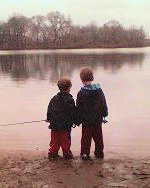According to the Discovery Health Channel, it is estimated that 1 in 3 beach goers do not know how to swim. The rational is that if you were not taught as a child then there is a hesitation to learn to swim as an adult.
Do you have another great question? Check out www.beachchairscientist.com and let us know what you always ponder while digging your toes in the sand!
 of fishing is going to be around for future generations to enjoy.
of fishing is going to be around for future generations to enjoy.






What people are saying …